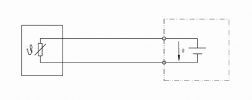In temperature calibration, high demands are placed on reference thermometers in terms of accuracy and reproducibility and thus long-term stability. Therefore, RTDs (“resistance temperature detectors”) – here specifically platinum resistance thermometers – and …
Pt100
Pt100 in class B or F 0.3 – what does IEC 60751 say?
| Roland Sachs | Know-howPerhaps you've already noticed that in some instances a Pt100 is specified with an accuracy class B or A. At other times, it has the class F 0.3 or F 0.15. This blog post looks at the specifications for Pt100 in the international IEC 60751 standard and explains the …
Measuring instruments for combined heat and power plants (CHP)
| Gerhard Renz | ApplicationsThe range of combined heat and power plants (CHP) is very large, as is the high variance of different plant types. The distinction is made by the generated power/heat output on the one hand and by the energy source used on the other. For all CHP plants, a large number …
Pt100 in 2-, 3- or 4-wire connection?
| Roland Sachs | Know-howPt100, Pt1000 and NTC are the most-used measuring elements in resistance thermometers . I would like to use this blog to consider the question of connection types in greater detail. Resistance thermometers change their electrical resistance as a function of …
Pt100, Pt1000 or NTC – which is the right sensor?
| Roland Sachs | Know-howEspecially the machine-building industry often asks me which is the right measuring element for them. This is the reason why I want to explain in this article the differences between the most commonly used sensors Pt100, Pt1000 and NTC. I will go into more detail about …






